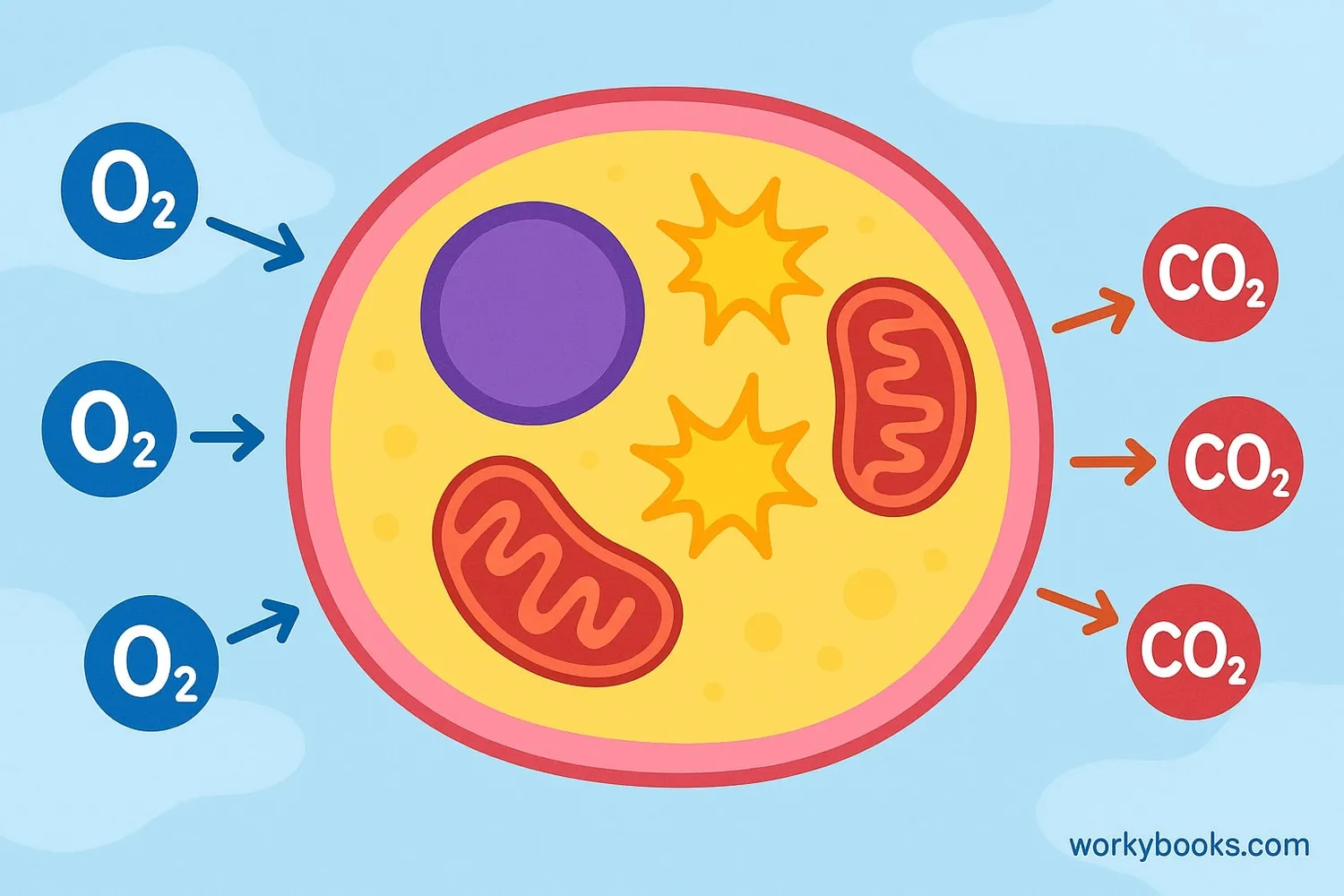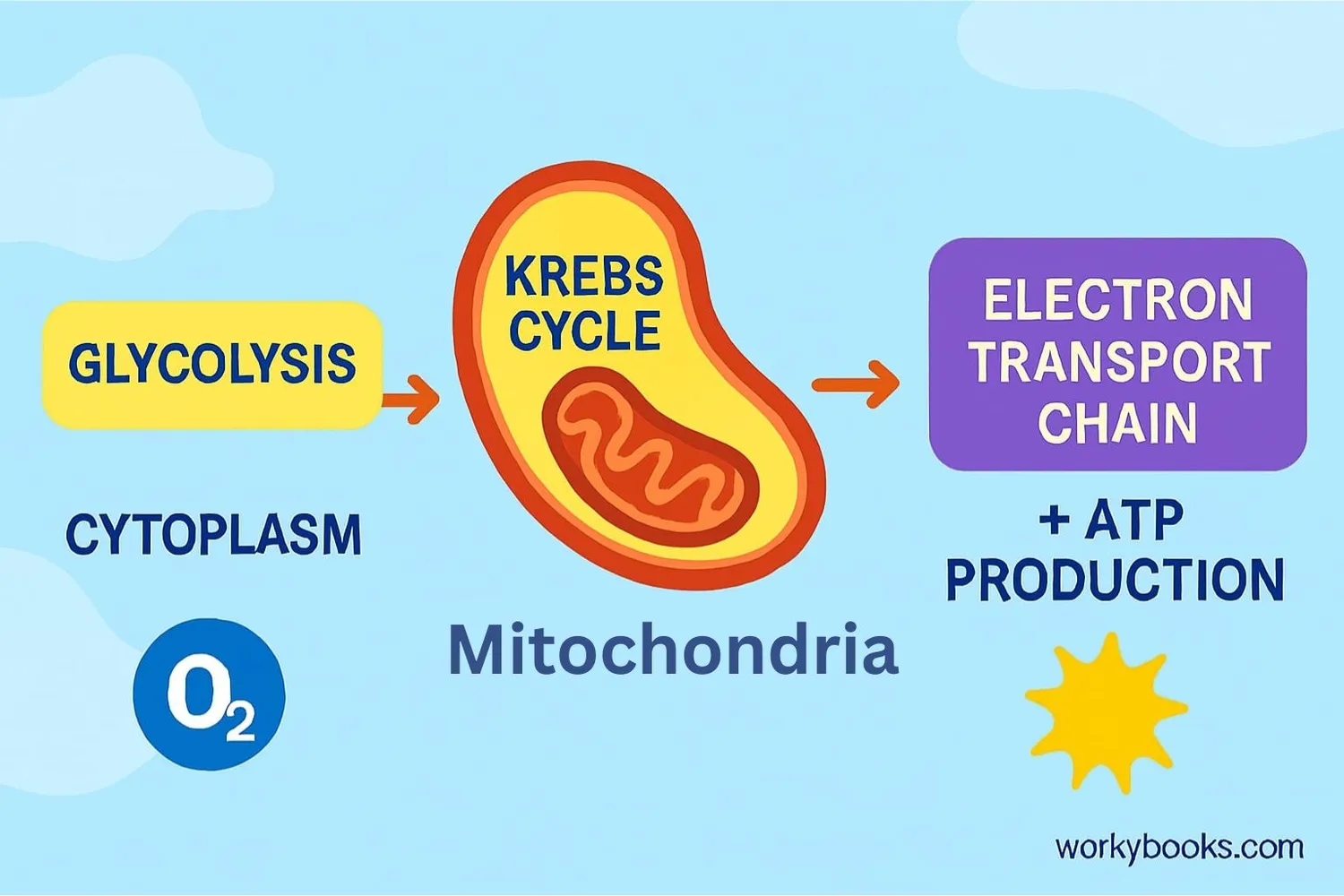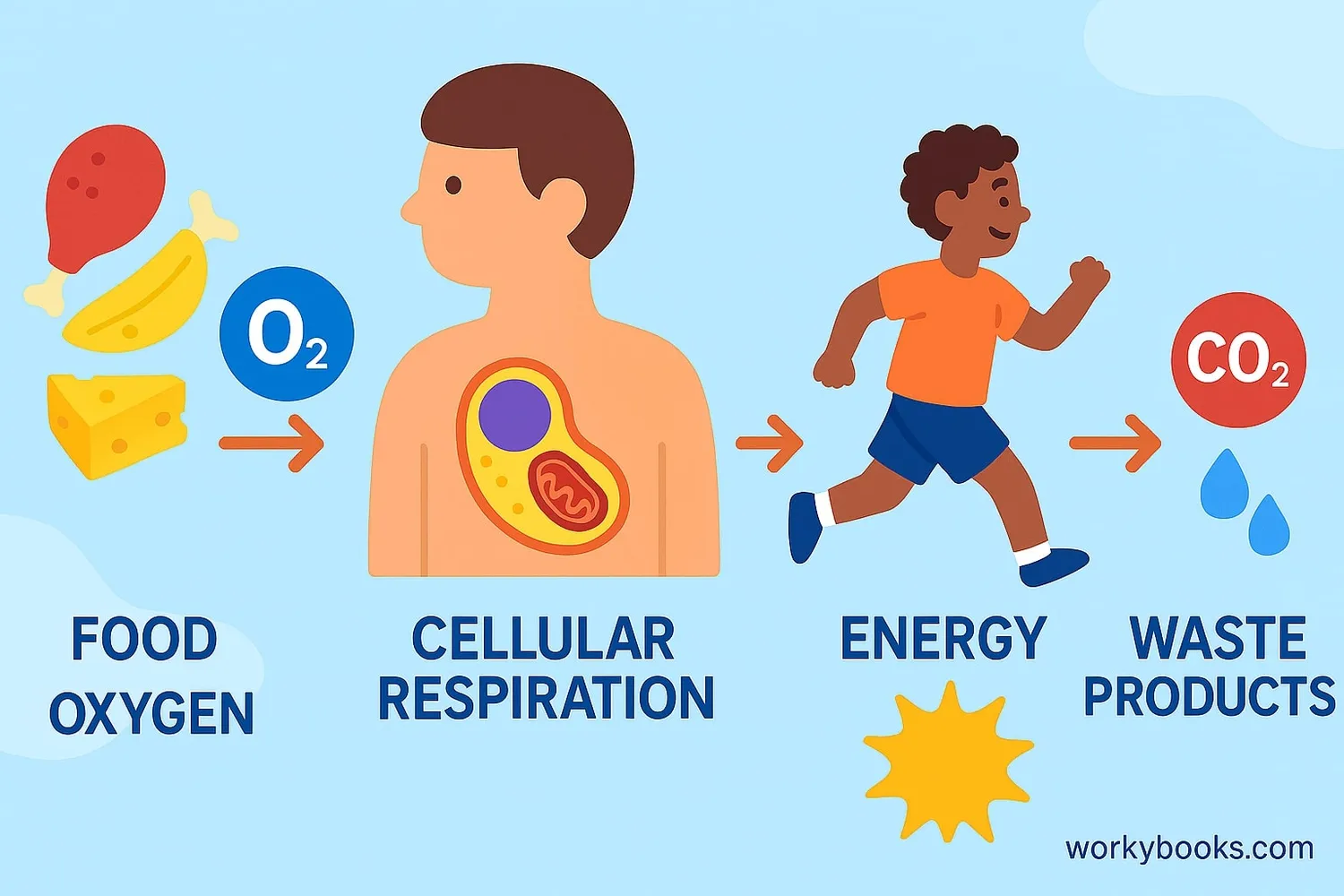Aerobic Respiration - Definition, Examples, Quiz, FAQ, Trivia
Discover how living things use oxygen to create energy from food
What is Aerobic Respiration?

Aerobic respiration is the process that living things use to create energy from food using oxygen! It happens in the mitochondria of your cells and is the main way your body produces energy for all activities.
Think of your cells as tiny factories that need fuel (food) and oxygen to operate. Aerobic respiration uses oxygen to break down glucose (sugar from food) into carbon dioxide and water, releasing energy in the form of ATP molecules. This process is called "aerobic" because it requires oxygen to work properly.
Key Fact!
Aerobic respiration produces much more energy than anaerobic respiration (which doesn't use oxygen). That's why we need to breathe oxygen constantly!
How Aerobic Respiration Works

Aerobic respiration happens in three main stages inside your cells. Each stage breaks down glucose further and releases energy:
Glycolysis
Glucose is broken down into smaller molecules in the cytoplasm
Krebs Cycle
Molecules are further broken down in the mitochondria
Electron Transport
Energy is produced as ATP using oxygen
The chemical formula for aerobic respiration is:
C₆H₁₂O₆ + 6O₂ → 6CO₂ + 6H₂O + 36 ATP
This means one glucose molecule plus six oxygen molecules produce six carbon dioxide molecules, six water molecules, and 36 ATP energy molecules!
Mitochondria Fact!
Muscle cells have the most mitochondria because they need lots of energy for movement. That's why athletes can produce so much energy!
Why Aerobic Respiration is Important

Aerobic respiration is essential for almost all living things! Here's why this process is so important:
Energy Production
Creates ATP energy for all cellular activities
Sustained Activity
Allows for prolonged physical and mental activities
Efficient Energy Use
Produces much more energy than anaerobic respiration
Without aerobic respiration, living things couldn't:
• Maintain body temperature
• Grow and repair tissues
• Move muscles for extended periods
• Support brain function for learning
Aerobic respiration works together with the respiratory and circulatory systems to bring oxygen to every cell in your body!
Aerobic Respiration Quiz
Test your knowledge with this interactive quiz. Try to answer all questions!
Frequently Asked Questions
Here are answers to common questions about aerobic respiration:
Aerobic Respiration Trivia
Discover some amazing facts about aerobic respiration!
Energy Production
Aerobic respiration is 15 times more efficient than anaerobic respiration! It produces 36 ATP molecules per glucose molecule, compared to just 2 from anaerobic respiration.
Animal Adaptations
Migratory birds have special adaptations for efficient aerobic respiration, allowing them to fly for days without stopping. Their muscles contain extra mitochondria for energy production!
Evolutionary Advantage
The development of aerobic respiration billions of years ago allowed for more complex life forms to evolve. It's one of the key reasons large organisms exist today!
Human Performance
Endurance athletes can improve their aerobic capacity through training. This allows their cells to produce energy more efficiently using oxygen.


